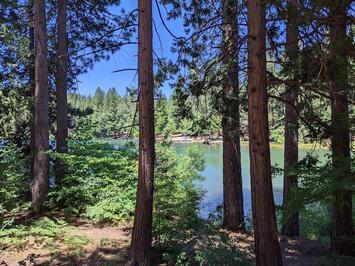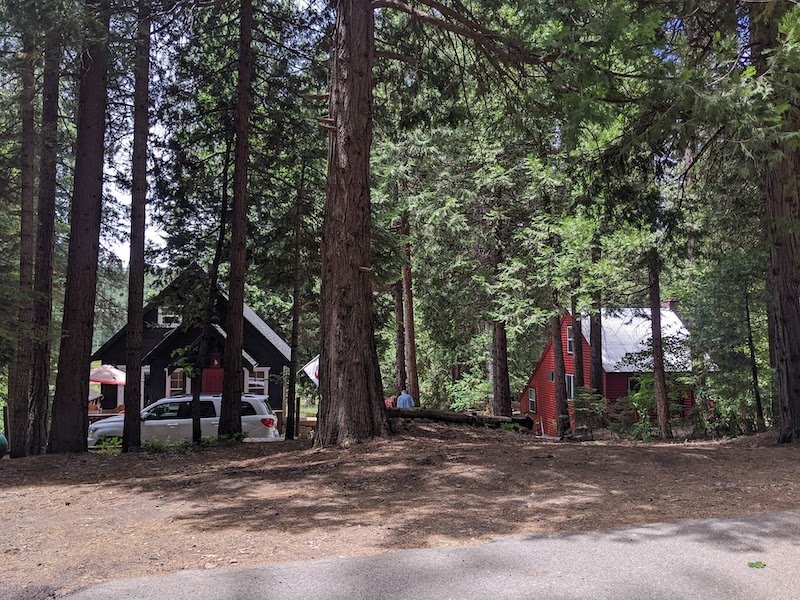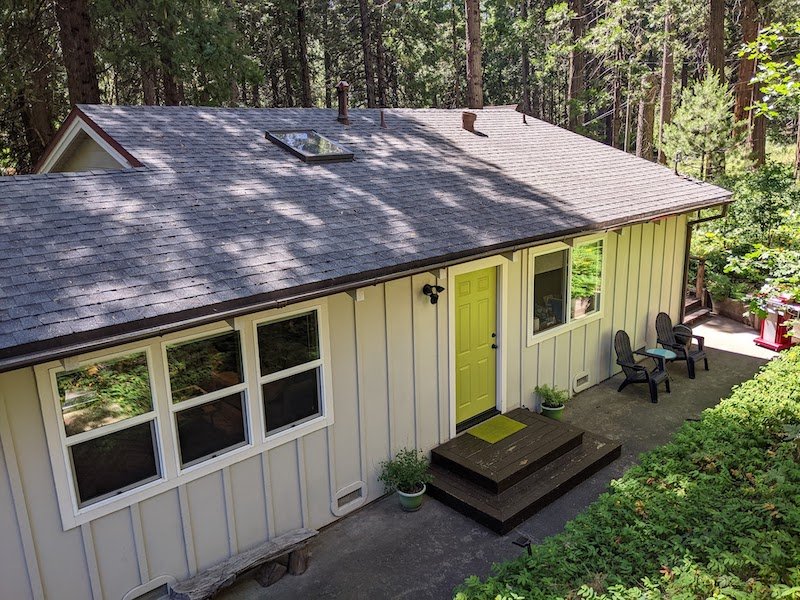
Over a long summer weekend a group of the usual suspects got together and rented a cabin in the Sierra foothills about three hours east of San Francisco. It was an idyllic landscape of modest homes tucked into the forest around a small lake.
As I walked around I chatted with some of the long time locals. One woman retired there with her husband 27 years ago. They’re both still going strong. She mentioned that a couple of years ago the winter snow was particularly heavy and the power went out for two solid weeks. The neighbors came and dug them out, brought groceries, and cooked for them. It’s that kind of community. People look after each other.

I read up on the history of the place. In the 1950s three brothers inherited acreage as part of the old family farm. They decided to clear a portion of the forest and create the lake by building an earthen dam along a creek. They established a water improvement district and subdivided the land into 586 lots which were sold off to city people looking for fresh air and relaxation. Homes were built one by one by individual property owners, mostly as second homes that gradually transitioned into retirement destinations. The cost to register this new development with the state of California in 1959 was $5 per lot. For those of you familiar with the current regulatory environment… things are different now. It’s unlikely such a place could be built today - for better and worse. Regulations solved one set of problems, but created new ones.
The house my friends and I rented was built the same year I was born, 1967. It’s a simple two bed, one bath affair. There are effectively no new single family detached homes being built this small today. The economics of the building trades and property development don’t support anything at this scale other than mobile homes. But I have no doubt there are millions of potential home buyers who would be happy to buy and occupy such properties if they were available. It’s a sweet place.

The current demographic is an odd mix. Big shiny new trucks were emblazoned with Trump flags and bumper stickers that read “Liberalism is a mental illness” along with electric Teslas with stickers quoting Sinclair Lewis proclaiming “When fascism comes to America it will be wrapped in a flag and carrying a cross.” More than once I saw both kinds of vehicles parked in front of the same house.
This is convergent evolution. What everyone has in common is the ability to afford a quality vehicle and a cabin by the lake. They’re only superficially at odds. Both camps would instantly unite to oppose any new development in the area. Neither would want the character of the region to change. They would object to increased traffic congestion, and rebel against outsiders of all kinds. And each faction would aggressively demand the government bail them out if their own personal affairs wobbled for any reason, regardless of their various political convictions. Just sayin’.
While we were there the electricity went out, affecting 5,000 homes and businesses. It’s a common occurrence in this rural location. Half the time we were at the lake we had no grid power. The cabin had an outdoor BBQ that ran off little propane tanks, an indoor wood stove, and several battery and solar powered lanterns. There wasn’t much need for electronic devices since there was minimal cell service in the area and the internet went down along with the electricity.
Read the rest of this piece at Granola Shotgun.
Johnny Sanphillippo is an amateur architecture buff with a passionate interest in where and how we all live and occupy the landscape, from small rural towns to skyscrapers and everything in between. He travels often, conducts interviews with people of interest, and gathers photos and video of places worth talking about (which he often shares on Strong Towns). Johnny writes for Strong Towns, and his blog, Granola Shotgun.
Photos: by the author.












